Papers by Valiallah Kavusi
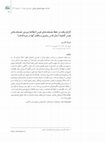
رهپویۀ هنرهای صناعی, 2024
The tradition of endowing Quran manuscripts to mosques and holy shrines has been established sinc... more The tradition of endowing Quran manuscripts to mosques and holy shrines has been established since the early decades following the rise of Islam. In Iran, the Imam Reza shrine complex in Mashhad has consistently served as the primary center for receiving endowed Quran manuscripts. Since at least the beginning of the tenth century, numerous individuals have endowed thousands of exquisite manuscripts at this site. The motivations behind these donations can be classified along a spectrum that includes desires for spiritual rewards, the dissemination of knowledge and awareness, the preservation of personal and familial legacies, and the safeguarding of works from the ravages of time. Among these, the latter motivation has proven particularly valuable for the study of Islamic art history.
During the Qajar period, which marks the transition from ancient to modern Iran, the Astan Quds Razavi underwent notable changes. The Shah himself assumed the role of custodian of the shrine, appointing his deputies from the capital. Additionally, government officials and aristocrats affiliated with the ruling class contributed their valuable Quran manuscripts, either as relics from their predecessors or commissioned by themselves, to Astan Quds Razavi.
This article will first outline the definitions and concepts of endowment within the context of the Quran and Islamic tradition, followed by an overview of the motivations for such endowments. It will also provide a brief account of the management of endowments at the Razavi shrine during the Qajar period. Furthermore, it will examine the personal lives and social statuses of ten donors of Quran manuscripts from this era, elucidating the impact of their roles and motivations on the preservation and enrichment of the Quran manuscript collection at Astan Quds Razavi. This inquiry aims to address the following questions:
1. What is the historical background and significance of the Razavi shrine collection in the collection and preservation of fine Quran manuscripts throughout history?
2. How was the management system of Astan Quds Razavi structured during the Qajar period, and what changes were implemented compared to previous periods?
3. What were the motivations behind the dedication of Quran manuscripts?
4. Who were the donors of these Quran manuscripts during this period, what were their social positions, and what was their relationship with the shrine of Imam Reza?
5. What processes were involved in the production and preservation of these Quran manuscripts, and what are their structural and aesthetic qualities? Additionally, which manuscripts can be identified as products of this period, and which are remnants from earlier periods?
Ultimately, it becomes evident that the endowment of these works, regardless of the underlying motivations, has contributed to their preservation and facilitated their study within the context of art history.
دانشنامۀ جهان اسلام، جلد 30, 2021
جعبهای معمولاً از جمس فلز، چوب، عاج، صدف، و کاغذ فشرده یا مواد دیگر، غالباً برای نگهداری از اشیا... more جعبهای معمولاً از جمس فلز، چوب، عاج، صدف، و کاغذ فشرده یا مواد دیگر، غالباً برای نگهداری از اشیاء. به انواع کوچکتر آن دُرج یا صندوقچه میگویند، که برای نگهداری از جواهر و زیورآلات و عطرها به کار میرود
دانشنامۀ جهان اسلام، جلد 30, 2021
از نخستین مدارس هنرهای تجسمی و صناعی در ایران، معروف به مدرسۀ کمالالملک
دانشنامۀ جهان اسلام، جلد 30, 2021
مجموعهای از حرفههای سنتی که در آنها اشیاء کاربردی با مهارت دست و ذوق فرهنگی صنعتگران ساخته میشود
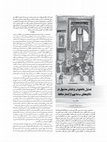
اطلاعات حکمت و معرفت, 2018
همنشینی دیرپای ادب پارسی و نگارگری ایرانی در نسخهنگارههای شاهنامۀ فردوسی و خمسۀ نظامی، تمرکز صا... more همنشینی دیرپای ادب پارسی و نگارگری ایرانی در نسخهنگارههای شاهنامۀ فردوسی و خمسۀ نظامی، تمرکز صاحبنظران این عرصه را غالباً به سوی واکاوی هنر نگارگری در ارتباطش با ادب حماسی و روایی کشانده و مطالعۀ همراهی این هنر با ادب تغزّلی و غنایی را کمرنگ کرده است. این کمتوجهی در حالی است که نگارگران ایرانی در دورههایی خاص توجه و تلاش زیادی صرف تصویرپردازی مضمونهای عاشقانه و صوفیانۀ شاعران غزلسرا کردهاند و نگفته پیداست که حافظ سرحلقۀ این شاعران و شعرش غنیترین دستمایۀ نگارگران بوده است. متن پیش رو نوشتاری ناب و کمیاب است در بازخوانی شعر حافظ از نگاه نگارگران پایان عصر تیموری و آغاز عصر صفوی. نویسندۀ نازکبین این متن با برگزیدن چهار نگاره از چهار نگارگر نامدار این ایّام، نازکخیالی ایشان را در نقش کردن اندیشۀ پرپیچ و زبان چندلایۀ حافظ کاویده است. او ظرافتکاری نقاشان را در گنجاندن ابیاتی از حافظ در گوشه و کنار نگاره، نشانۀ ادراک عمیق آنان از نکتههای نهفته در شعر شاعر میشمارد. این هنرمندان همنوا با حافظ زهد ریایی زاهدنمایان را رندانه به ریشخند میگیرند و با سالک مجذوب همدلی میکنند. گاه به آوای طربْ سماع صوفیان را نمایش میدهند و گاه در قامت مجنونِ زمان جلوهای از جمال لیلی را رقم میزنند که معشوق ازلی عشّاق روزگار است. گاهی نیز نقشی از خود یا ولینعمتشان را در کُنجی از تصویر جا میدهند که با خضوع و حیرت به تماشای شکوه شعر حافظ زانو زدهاند. به باور نویسنده، نگارگران این عصر با ابزارشان، طرح و رنگ، غزلیات حافظ را از راه تصویر روایت و تفسیر میکنند.
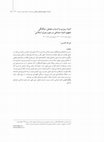
رهپویه هنرهای صناعی, 2021
The work of the craftsmen of the Islamic era, which are considered to be the original works of Is... more The work of the craftsmen of the Islamic era, which are considered to be the original works of Islamic art today, have been mentioned in earlier sources from two different perspectives; One is concerned with their practical aspect in the life of the general public and the other with the prestige of their ornamental and luxurious aspect in the treasures of the rich people. These dual interpretations in the writings of some former authors of the Islamic world have become the basis for the classification of handicrafts into two essential and luxurious groups. The purpose of this article is to approach to the perception of the former peoples of the Islamic world of the craftswork by searching for these objects and their related crafts in historical texts. The result shows that the objects that are known today as works of crafts belong to the second group; But this artistic dignity does not come from today's point of view, but they have been respected by their original creators and owners beyond their practical aspects and have been appreciated and maintained in the place of exquisite masterpieces. On the other hand, everyday objects have their own status and have never been far from the focus of Islamic authors.

Restoration, reconstruction, renovation and rehabilitation of the monuments and architectural of ... more Restoration, reconstruction, renovation and rehabilitation of the monuments and architectural of the past is a notable aspect of architectural course in the Timurid period. The pioneer of this course was Timur (Tamerlane) himself. He spent much wealth for the construction, and rebuilt some of the remaining buildings. His son and successor, Shahrukh, overtook his father in the architectural patronage and reconstruction. In the reign of Shahrukh, the princes and courtiers got relatively authority for restoration. After Shahrukh, this process was continued by Timurid kings like Mirza Abu’l-Qasim Babur and Sultan Abu-Sa’id. Sultan Husayn Bayqara and his vizier, Ali-Shir Nava’i rebuilt some of the previous buildings. Many of the officers, as well as rich people out of the court, increased buildings through various constructions. In comparison with the vast architectural activities in Timurid period, what is remained is little. However, the Timurid historians’ reports can compensate the shortage of information relatively. It seems that this part of Timurid architecture has been neglected by scholars.
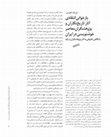
Iranian Academy of the Arts, 2020
گستردگی کاربرد خط در جامعۀ اسلامی نوشتن دربارۀ خوشنویسی و کتابت را از بدو ظهور اسلام ضروری کرد. د... more گستردگی کاربرد خط در جامعۀ اسلامی نوشتن دربارۀ خوشنویسی و کتابت را از بدو ظهور اسلام ضروری کرد. در چند سدۀ نخست، نوشتهها غالباً آموزشی بودند، اما از سدۀ چهارم نگارش تاریخ خط و معرفی خوشنویسان متداول شد و، با افت و خیزهایی، تا سدۀ یازدهم تداوم یافت. از نیمههای سدۀ دوازدهم برخی خوشنویسان و خطشناسانِ ممالک اسلامی، بهویژه در ایران و عثمانی، با نظر به تألیفات گذشتگان، تذکرهنویسی خطاطان را از سر گرفتند. با ظهور مظاهر تجدد، مؤلفان و محققان هر دو سرزمین، دوشادوش یکدیگر، مباحث تاریخ تحولات خطوط را در کنار سرگذشتنویسی پیش بردند و، بر اساس روشهای پژوهشی جدید، از منابع گستردهتری، اعم از مکتوب و تصویری، با نگاهی تحلیلیتر استفاده کردند. انطباق ساختار و محتوای آثار پژوهشگران ایرانی و تُرک در این زمینه نشان از همسانی بنیادهای فرهنگی مردمان هر دو سرزمین دارد. این همراهی پژوهشی تا امروز ادامه یافته، اما ظاهراً دچار یکنواختی شده و همچنان از سطح تاریخنگاری و شرححالنویسی فراتر نرفته؛ حال آنکه گرههای متعددی در زمینۀ خوشنویسی اسلامی ناگشوده مانده است. در این نوشتار، با نگاهی تطبیقی و انتقادی، مهمترین کتابهای تاریخی و تحقیقی خوشنویسی طی یکصدوپنجاه سال گذشته در دو منطقۀ ایران و ترکیه بهاختصار بررسی و اثرپذیری یا استقلال آنها از یکدیگر بازگو و پیشنهادهایی برای پژوهشهای آتی عرضه شده است.
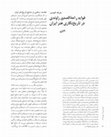
Iranian Academy of the Arts, 2020
ابوبکر محمد بن علی بن سلیمان راوندی، ملقب به نجمالدین، مورّخ و ادیب و خوشنویس اواخر سدۀ ششم و او... more ابوبکر محمد بن علی بن سلیمان راوندی، ملقب به نجمالدین، مورّخ و ادیب و خوشنویس اواخر سدۀ ششم و اوایل سدۀ هفتم، در خاندانی از فضلای راوند، از آبادیهای قدیم کاشان، زاده و پرورده شد. او در حمایت سلطان طغرل سوم، آخرین فرمانروای سلجوقی، علم و هنر آموخت و در نیمههای عمر کتاب راحه الصدور وآیه السرور را در تاریخ آلسلجوق نوشت که مهمترین منبع تاریخی اواخر روزگار قدرت این سلسله است. جدا از فواید تاریخی، اخبار و اطلاعات کتاب راحه الصدور در باب حیات فرهنگی و اجتماعی مردم در عهد سلجوقیان ایران و روم، این کتاب را از معتبرترین منابع شناخت فرهنگ و هنر ایران در روزگار پیش از حملۀ مغولان به ایران کرده است. همچنین نخستین روایت بازمانده در شرح قواعد خطوط ایرانی را هم راوندی در اوایل سدۀ هفتم نوشت. گویا راوندی رسالهای مستقل در باب خوشنویسی تألیف کرده بود که اکنون از میان رفته، اما نویسنده فصلی از آن را در کتاب راحه الصدور گنجانده است. ظاهراً راوندی در تلاش برای منطبق کردن مباحث نظری تناسبات هندسی با اقلام ایرانی بود که در آنوقت همچنان در جریان تکوین و ترقی بودند. نوشتۀ راوندی اطلاعاتی دربارۀ حمایتهای درباری از کاتبان و جایگاه خوشنویسی در آن روزگار بهدست میدهد. راوندی برخاسته از خاندانی خوشنویس بود و دو داییاش تاجالدین احمد و زینالدین محمود علاوه بر تعلیم خط به او، به شاهزادگان سلجوقی هم سرمشق خط میدادند. نسخهای نفیس از قرآن با خط و تذهیب این خاندان در گنجینۀ آستان قدس رضوی محفوظ است.
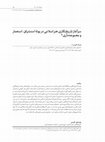
University of Tehran, College of Fine Arts, 2020
The field of historiography and study of Islamic art appeared about two centuries ago on the frin... more The field of historiography and study of Islamic art appeared about two centuries ago on the fringes of oriental studies of Western linguists, litterateurs, and historians. The New approaches to historiography and passion for getting acquainted with Islamic texts through translation and correction, facilitated understanding of the various aspects of Islamic civilization, including art. The setting up of Arabic language courses at European universities was another way of Westerners acquaintance with Islamic culture. Following these trends, the interest in Islamic art and architecture began to develop from the late eighteenth century onwards, receiving a great impetus from the first wave of European expansion. A little later, some groups of architects and draftsmen, enthusiast for visiting Islamic monuments, went to Spain, which had great monuments of Islamic architecture. The colonial occupation and political relations of Western authorities, specially Germany, France, and United Kingdom, in Islamic lands, from Morocco and North Africa to Anatoly, India, and Iran, brought travelers with architectural and designing skills to these area. Drawing and registering survived and destroyed buildings, collecting objects and items, as well as designing and categorizing them, were among common practices. The results of such efforts were a copious of designs and pictures from Islamic monuments, which introduced Islamic architecture to the Western people. Thus, until about the middle of the nineteenth century, travelling to Islamic lands and drawing monuments were the most important attempts of those who interested in the arena in the West, most of them either were architects or had interested in architecture. In another phase, trading of Islamic items between European clients and local brokers, led to be acquired a plenty of works of Islamic art and crafts by Western museums and collections. Meanwhile, the role of the agents of South Kensington Museum in London was more prominent. The buyers and collectors of Islamic items in this period considered the main source of artistic creativity in the Islamic world not Anatolia, Syria and Egypt, but Iran. The esteem for Persian Art that was developing among European collectors and art institutions resulted in a period of intensive acquisition in Iran. Several years of drought and famine in Iran exacerbated the situation. The first European collector to be active in Iran was the Frenchman Jules Richard, also known as Mirza Riza. Among the latter, the most prominent was Robert Murdoch Smith, who in 1873 offered his services to the South Kensington Museum. These, and other, activities enabled new area of Persian art to become known in Europe. As we have seen, the study of Islamic art as it emerged in the early twentieth century has clear political and cultural reasons. In this article, we read the story of the Westerners encounters with the legacy of Islamic art by revising the narratives of European scholars themselves. In the end, we will see that the arena today known by the name of Islamic art for all the art scholars in the world, product of these initial encounters.
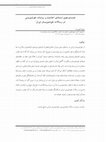
Sooreh University, 2019
The script and writing have been among the necessities of daily religious and social life of Musl... more The script and writing have been among the necessities of daily religious and social life of Muslims and in many verses of the Quran has been explicitly emphasized on them. The Prophet, Muhammad, following the Divine command and understanding the importance of the subject, appointed some people to teach and practice writing and of necessity, self-guided them in understanding the theological virtue, or even the way they took over. Ali, Prophet’s son in law, and a group of trusty companions of Prophet began to write the words of revelation. It is clear that these practitioners have sometimes described some tips about their work. These sayings were gathered in books of Hadith collection by theologians and traditionalists (Muhaddith) and when the work of scribes flourished in the government affairs and among the people of knowledge, and calligraphy techniques emerged, they became popular among calligrapher, especially in Calligraphy Training, and were spread everywhere in the Islamic world until reached to the Iranian calligraphers. In this land, the origin of competent scribes at least from the fourth / tenth century, was established a coherent system of training the artists and artisans from the mid-seventh / thirteenth century and in calligraphy, that was widely used everywhere and every time, was compiled educational treatises and later biographies of calligraphers that have yet been the reference for scholars until now. All the texts related to calligraphy are begun with mentioning some of the sayings of the infallible wisdom and the words of celebrities or aphorisms common among experts and have been narrated from generation to generation. These traditions and sayings still recount, more or less, between calligraphers and sometimes even invoked is written, but apparently no one right or wrong assignment of the speakers, whether or not their infallible, pondered and documented in this study have not been done. The necessary of the attention when became more that know the same words have attributed at different times to different people, while in the original sources have been narrated different narrative of them. After a glance at the formation and spread of writing in the early Islamic period and the entre of religious leaders in this field, in this article has been tried to evaluate the authenticity of the traditions in these treaties through studying the aphorisms and sayings in Persian calligraphy treatises, and referring to reliable sources of Shi’a hadith, and, if possible, extracted the original traditions or samples of them from the original sources and compare them with calligraphers sayings; then has adapted some scattered remarks attributed to scholars in various treatises. It should be noted that advanced search supplier for author to search in Hadith texts has not been the original resources, but has been the software of Jami al-Ahadith produced by Computer Research Center of Islamic Sciences. Also, the base source for study the narratives of calligraphers has been the treatise of Abdallah Sayrafi’s Adab al-Khat, and, because of it is the oldest and most complete treatise on calligraphy, the narratives of other treatises adapted whit it.
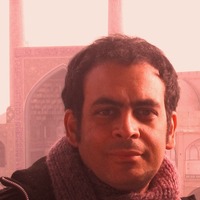



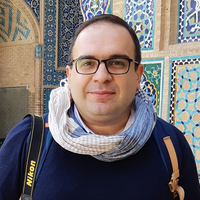



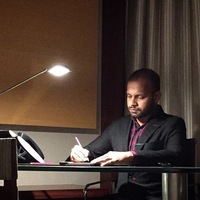

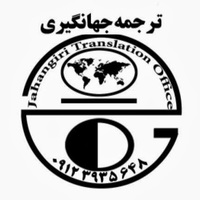
Uploads
Papers by Valiallah Kavusi
During the Qajar period, which marks the transition from ancient to modern Iran, the Astan Quds Razavi underwent notable changes. The Shah himself assumed the role of custodian of the shrine, appointing his deputies from the capital. Additionally, government officials and aristocrats affiliated with the ruling class contributed their valuable Quran manuscripts, either as relics from their predecessors or commissioned by themselves, to Astan Quds Razavi.
This article will first outline the definitions and concepts of endowment within the context of the Quran and Islamic tradition, followed by an overview of the motivations for such endowments. It will also provide a brief account of the management of endowments at the Razavi shrine during the Qajar period. Furthermore, it will examine the personal lives and social statuses of ten donors of Quran manuscripts from this era, elucidating the impact of their roles and motivations on the preservation and enrichment of the Quran manuscript collection at Astan Quds Razavi. This inquiry aims to address the following questions:
1. What is the historical background and significance of the Razavi shrine collection in the collection and preservation of fine Quran manuscripts throughout history?
2. How was the management system of Astan Quds Razavi structured during the Qajar period, and what changes were implemented compared to previous periods?
3. What were the motivations behind the dedication of Quran manuscripts?
4. Who were the donors of these Quran manuscripts during this period, what were their social positions, and what was their relationship with the shrine of Imam Reza?
5. What processes were involved in the production and preservation of these Quran manuscripts, and what are their structural and aesthetic qualities? Additionally, which manuscripts can be identified as products of this period, and which are remnants from earlier periods?
Ultimately, it becomes evident that the endowment of these works, regardless of the underlying motivations, has contributed to their preservation and facilitated their study within the context of art history.
During the Qajar period, which marks the transition from ancient to modern Iran, the Astan Quds Razavi underwent notable changes. The Shah himself assumed the role of custodian of the shrine, appointing his deputies from the capital. Additionally, government officials and aristocrats affiliated with the ruling class contributed their valuable Quran manuscripts, either as relics from their predecessors or commissioned by themselves, to Astan Quds Razavi.
This article will first outline the definitions and concepts of endowment within the context of the Quran and Islamic tradition, followed by an overview of the motivations for such endowments. It will also provide a brief account of the management of endowments at the Razavi shrine during the Qajar period. Furthermore, it will examine the personal lives and social statuses of ten donors of Quran manuscripts from this era, elucidating the impact of their roles and motivations on the preservation and enrichment of the Quran manuscript collection at Astan Quds Razavi. This inquiry aims to address the following questions:
1. What is the historical background and significance of the Razavi shrine collection in the collection and preservation of fine Quran manuscripts throughout history?
2. How was the management system of Astan Quds Razavi structured during the Qajar period, and what changes were implemented compared to previous periods?
3. What were the motivations behind the dedication of Quran manuscripts?
4. Who were the donors of these Quran manuscripts during this period, what were their social positions, and what was their relationship with the shrine of Imam Reza?
5. What processes were involved in the production and preservation of these Quran manuscripts, and what are their structural and aesthetic qualities? Additionally, which manuscripts can be identified as products of this period, and which are remnants from earlier periods?
Ultimately, it becomes evident that the endowment of these works, regardless of the underlying motivations, has contributed to their preservation and facilitated their study within the context of art history.